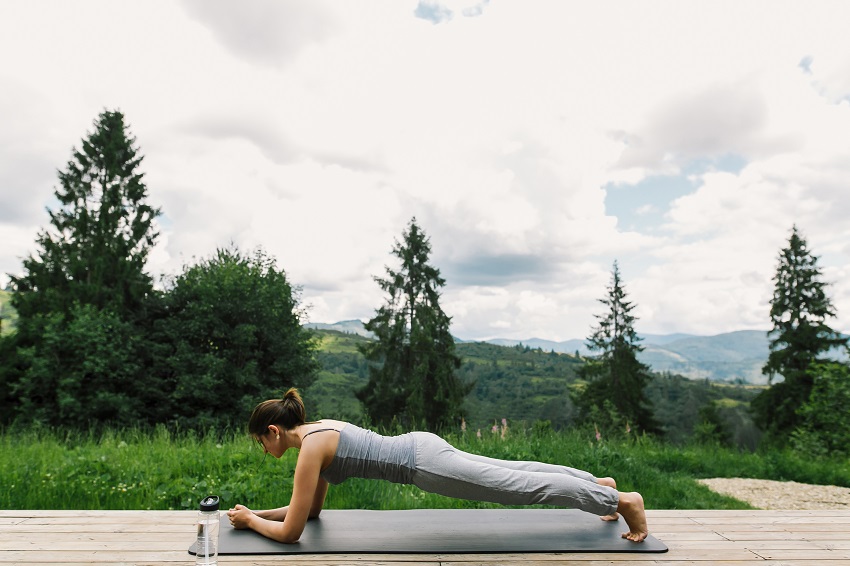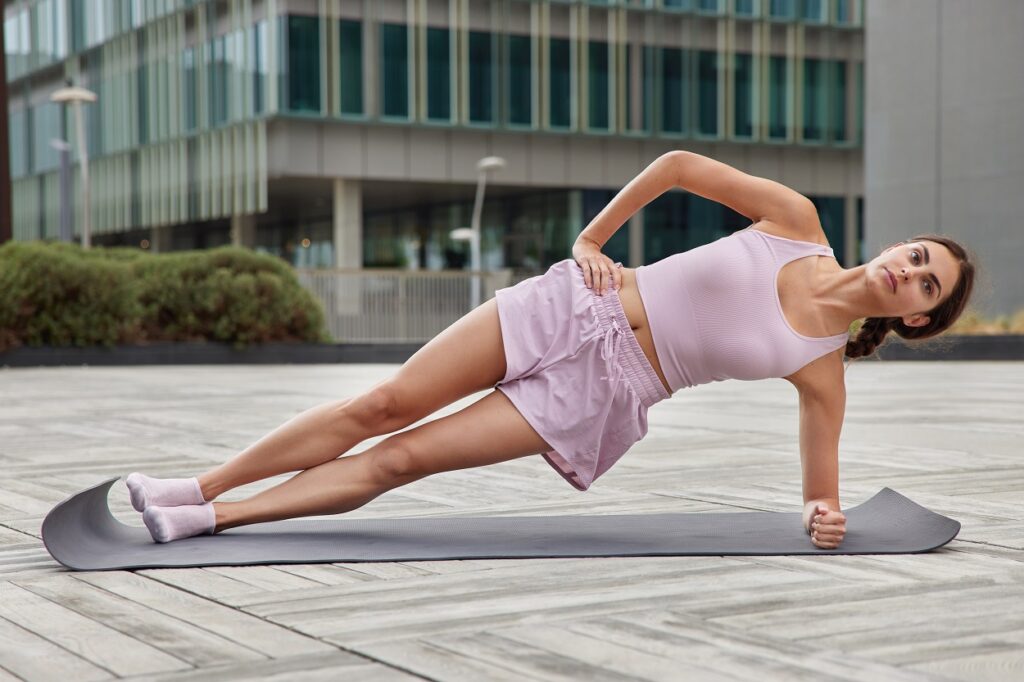Plank Pose:
Name: Plank Pose
Sanskrit: Phalakasana
Pronunciation: Fal-ack-AHS-anna
Pose Level: Intermediate

Step-by-Step:
- Lie on your stomach, bringing your elbows and forearms to rest on the floor. Make sure your elbows are perpendicular to the floor and below your shoulders;
- Get strong on your forearms, contract your abs and synergistically lift your body. Distribute the weight load between your forearms, abdomen and toes, until you form a straight line from head to toe;
- In addition, keep your legs straight and slightly spread, do not bend your knees;
- Bring the neck in line with the rest of the body and fixate on a point on the ground;
- Simulatensouly, actively contract abdominals and buttocks;
- Don’t rotate your hips and lift your pelvis, try to stay in line with your back;
- Don’t move your shoulders, stay in line with your elbows;
- Do not close and curve the shoulder blades and do not yield with the trunk downwards;
- Do not arch your back;
- Remain in the correct position for a set time or breath cycle(s).
Benefits:
Plank pose has the ability to:
- Improve body balance and posture.
- Strengthen (i.e. the spine, abdomen, core, shoulder bones, pelvis and joints)
- Reduce back pain
- Easy to modify
Pose Modifications:
Kneeling plank:
Get into a plank position, lean on your forearms, bend and rest your knees on the ground. Tighten your abs and stay in place for longer durations of time.
Side Plank:

Lie on one side of the body with your legs straight and the forearm perpendicular to the body. Activate the abdominals and slowly raise the body so as to remain in balance only on the feet and forearm (you can do it with your legs together or with one leg in front and one behind). Hold the position for as long as you can or set. The exercise can also be done with the arm outstretched.
In addition to the alternatives above, you may try to incorporate other parts of the body. For example, doing knee touches in plank, or arm and leg extensions.
Contraindications:
Contraindications can include ailments such as carpal tunnel syndrome or other injuries to your wrists, and elbows. Recent or chronic shoulder pain, may also become aggravated by this maneuver.
Oftentimes, we also advocate reaching out to a certified yoga instructor or health expert if pregnant and wanting to challenge yourself with yoga asanas, like Plank.
Poses Commonly Transitioned too:
Chaturanga Dandasana, Downward Facing Dog
Poses Commonly Transitioned From:
Forward Fold




